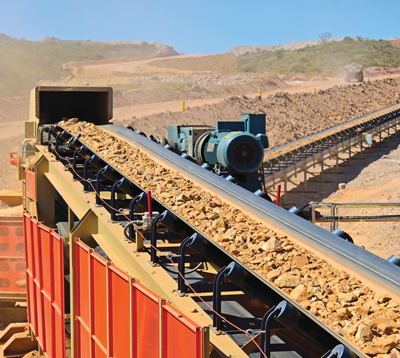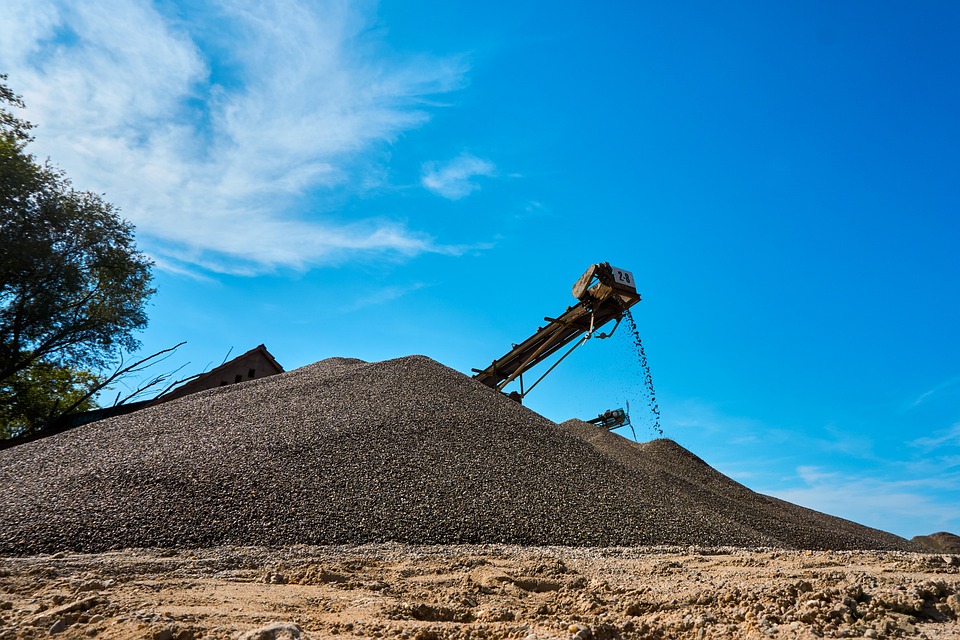
Key Design Principles for Conveyor Drive Rollers in Mining Applications
Conveyor Drive Rollers for Mining: Essential Components for Efficiency and Reliability

1. Introduction
In modern mining transport systems, conveyors are indispensable core components. They carry crucial materials from mining sites to processing facilities, where their efficiency and reliability directly impact operational smoothness. As one of these critical components, conveyor drive rollers play a pivotal role in ensuring the efficient operation and sustained performance of these systems. This article explores in depth the applications, design principles, selection guides, and future trends of conveyor drive rollers in mining.
2. Basic Overview of Conveyor Drive Rollers
Conveyor drive rollers serve as the power source in conveyor systems, transmitting power from electric motors to drive the continuous movement of conveyor belts. They consist of internal bearing systems, dust seals, bearing housings, and power transmission mechanisms that connect to the motor. The design and selection of these components directly influence the roller's load capacity, durability, and operational efficiency.
3. Applications in Mining Environments

Conveyor drive rollers must withstand diverse operational conditions and challenges in different types of mining environments. For instance, in environments with high humidity or dust concentration, effective sealing designs are crucial to prevent moisture and particles from entering the bearing system, thereby extending its lifespan and reducing maintenance needs. Additionally, temperature variations are also a factor to consider in roller design to ensure stable operation under extreme conditions.
4. Design Principles of Conveyor Drive Rollers
To ensure long-term reliable operation under harsh conditions, conveyor drive rollers must adhere to strict engineering principles. Firstly, the roller's structure must withstand anticipated loads and impact forces, necessitating the selection of appropriate bearing types, sizes, and robust bearing housing designs. Secondly, optimizing energy efficiency is a key current design objective, achieved through reducing roller rotational resistance and enhancing motor efficiency.

5. Technical Specifications and Selection Guide
When selecting conveyor drive rollers, detailed assessments should be based on specific application requirements. Below is a comparison table of common conveyor drive roller technical specifications:
| Type | Diameter (mm) | Max Power (kW) | Max Speed (rpm) | Application Scenarios |
|---|---|---|---|---|
| Heavy Duty | 400 | 75 | 1500 | High load, high-intensity transport |
| High Speed | 300 | 55 | 1800 | High-speed long-distance transport |
| Dust-resistant | 350 | 65 | 1200 | Applications in dusty environments |
These specifications serve as examples; actual selection should be customized based on specific conditions and technical requirements.
6. Installation and Maintenance Tips
Correct installation and regular maintenance of conveyor drive rollers are crucial for the long-term stability of the system. During installation, aligning the roller shaft with the conveyor belt and following manufacturer-provided installation guidelines are essential. Maintenance involves regular checks on bearing lubrication, seal performance, and cleaning and inspecting power transmission components for wear to prevent potential failures and damages.

7. Future Trends in Conveyor Drive Rollers
With rapid advancements in industrial automation and smart technologies, conveyor drive rollers are also evolving. Future rollers may integrate more sensors and monitoring devices for real-time health monitoring and remote fault diagnostics. Additionally, demands for energy efficiency and sustainability will drive the adoption of advanced materials and designs to reduce energy consumption and environmental impact.
8. Conclusion
In conclusion, conveyor drive rollers are indispensable components in mining conveyor systems, playing irreplaceable roles in enhancing production efficiency and ensuring operational reliability. Through proper selection, design, and maintenance practices, their performance can be optimized to lay a foundation for future technological innovations and sustainable development.
 The Permanent Magnet Motor Drum: A Superior Choice for Modern Conveyor Systems
The Permanent Magnet Motor Drum: A Superior Choice for Modern Conveyor Systems
 Rubber Conveyor Rollers Price
Rubber Conveyor Rollers Price
 Gold Mining Belt Conveyors: Design, Selection, Engineering Calculations & 2025 Technology Guide
Gold Mining Belt Conveyors: Design, Selection, Engineering Calculations & 2025 Technology Guide
 The Ultimate Guide to Material Handling Belt Conveyors in Mining, Aggregates, Quarries & Cement Plants
The Ultimate Guide to Material Handling Belt Conveyors in Mining, Aggregates, Quarries & Cement Plants
 Tubular Belt Conveyor: Revolutionizing Bulk Material Handling
Tubular Belt Conveyor: Revolutionizing Bulk Material Handling
 Understanding the Cost of Conveyor Belts: A Comprehensive Guide for Businesses
Understanding the Cost of Conveyor Belts: A Comprehensive Guide for Businesses
 How to Choose the Best Mining Conveyor Idlers for Your Operation
How to Choose the Best Mining Conveyor Idlers for Your Operation
 Daily Idler Maintenance Checklist: A Comprehensive Guide
Daily Idler Maintenance Checklist: A Comprehensive Guide


